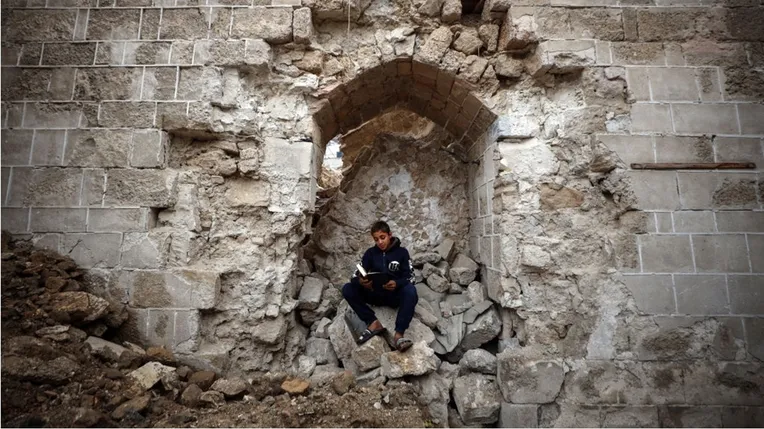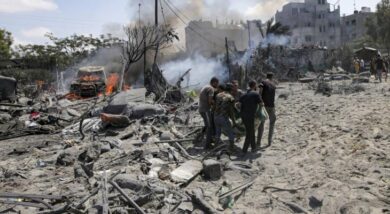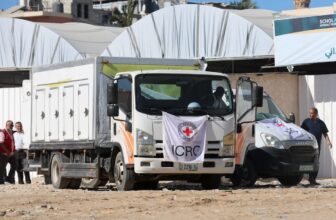Israel buries Gaza’s ancient heritage under rubble during two years of genocidal war
شبكة الخامسة للأنباء - غزة

Since the start of the latest offensive on the Gaza Strip, the losses have not been limited to lives and property but have extended to ancient heritage and monuments that form an important part of Palestinian identity and human history. Many archaeological, religious and cultural sites have been completely or partially destroyed, in what is described as a systematic effort to erase historical traces.
Scale of damage and documentation
Number of affected sites:
A report by the Palestinian Ministry of Tourism and Antiquities in cooperation with the Cultural Heritage Protection Center states that 226 archaeological sites in Gaza were damaged as a result of direct Israeli targeting.
Out of 316 heritage sites that were audited for damage status.
Degrees of damage:
138 sites were heavily damaged
61 sites were moderately damaged
27 sites sustained minor damage
90 sites remained without significant damage to report
Destroyed or affected sites:
Tell al-Sakkan, Tell al-‘Ajoul and Tell al-Mintar, as well as coastal statues and archaeological coastal sites, suffered severe damage from shelling and attacks.
The Byzantine Bibliaa Church (Jabaliya Church), which contained mosaics from the Byzantine era, was severely damaged.
Al-Saqqa House in Shujaiya — a 17th-century historic building — was almost destroyed or heavily damaged.
Pasha’s Palace, a masterpiece of the Mamluk and Ottoman periods and an old museum, was heavily damaged.
Hamam al-Samara, a historic Mamluk-era bath, was also destroyed.
Declared reasons and legal risks
Some Israeli sources say that some of these sites were used for military purposes by Hamas, such as tunnels or observation posts.
International and research organizations warn that targeting cultural heritage constitutes a breach of international humanitarian law, including treaties such as the Hague Convention for the Protection of Cultural Property in the Event of Armed Conflict.
There is also a warning that the damage extended beyond buildings and sites to include the loss of movable antiquities, manuscripts, libraries and museum collections.
Cost required for reconstruction
A report by the Ministry of Tourism and Antiquities indicates that restoring the cultural heritage of the Strip will require about €261.15 million, phased over eight years.
The restoration phases include: urgent rescue of threatened sites, rehabilitation of moderately damaged sites, and reconstruction and restoration of severely threatened sites.
Human dimensions and cultural identity
Archaeological heritage and historical sites are not merely stones or buildings; they represent national memory, identity and the ties between people and their land across decades and centuries. Destroying them strikes at the core of belonging and dignity.
Antiquities and civilization in Gaza are subject to a systematic assault that is no less devastating than the physical attacks on people and property. What is lost today cannot be fully recovered, and future generations may be left with a cultural burden that prevents them from reclaiming parts of their identity etched in these landmarks. With each day that the destruction continues, the question becomes not whether we will recover, but how much history has been buried under the rubble forever?






